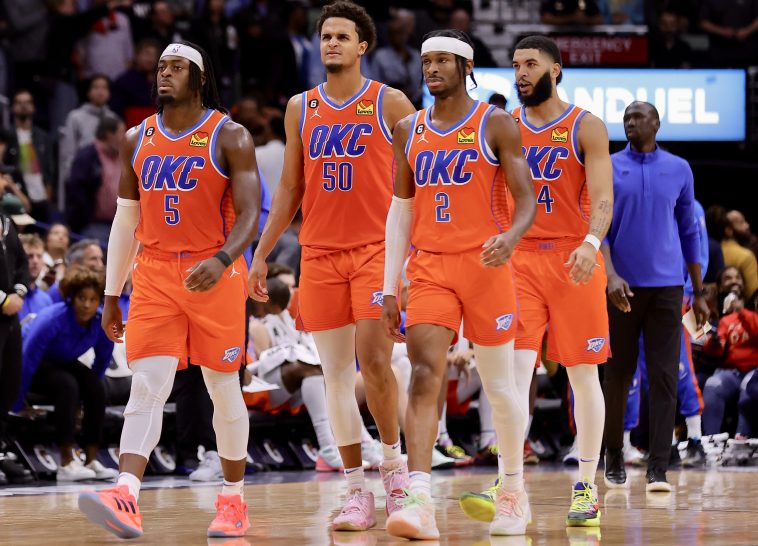As the new season approaches, the Oklahoma City Thunder finds itself confronted with a series of roster-related choices.
Throughout the offseason, the Thunder has remained a subject of media discussions, primarily because the team has managed to accumulate more players than it can officially carry into the regular season.
The reason behind this roster surplus has garnered attention due to the presence of promising talents at the bottom of the Thunder’s roster.
However, it’s important to note that the team acquired these players by taking on assets rather than actively seeking them out. Both TyTy Washington Jr. and Usman Garuba, for example, were brought to the Oklahoma City Thunder with attached value.
Although the roster crunch might give the impression that the Thunder is parting ways with NBA-level talents that would be quickly snapped up in free agency, this doesn’t seem to be the case.
The team’s decisions mainly revolve around players whose impact on winning from an on-court perspective is limited.
The Thunder possesses an intriguing core of players, many of whom are still in the developmental phase themselves. Notably, the starting lineup is devoid of players under the age of 25, a trend that extends to the bench.
Given this scenario, it raises questions about the practicality of introducing additional raw talents into the mix, as the team already has a lineup and rotation saturated with players fitting that profile.
While analyzing the roster situation provides an engaging pastime during the offseason, the focus tends to shift when the actual season commences.
Attention will refocus on the active player development on the court, with the potential 16-18 individuals on the roster largely fading from fan memory.
Ultimately, despite the perception that these decisions and maneuvers may have lasting ramifications, the reality is likely different. The Thunder is anticipated to enter the season with the 15 players who best align with their present circumstances.
